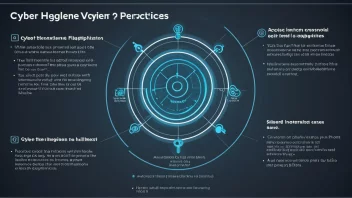Cryptographic hashing algorithms are fundamental components of modern computing systems, playing a critical role in ensuring data integrity, security, and privacy. These algorithms take input data of any size and produce a fixed-size string of characters, which serves as a unique identifier for the input. In this article, we delve into the various aspects of cryptographic hashing algorithms, exploring their workings, applications, and significance in fields such as blockchain technology, data integrity, and password storage.
What is a Cryptographic Hashing Algorithm?
A cryptographic hashing algorithm is a mathematical function that transforms an input (or 'message') into a fixed-length string of characters, which is typically a sequence of numbers and letters. This output is referred to as a 'hash' or 'digest'. The primary characteristics of a cryptographic hash function include:
- Deterministic: The same input will always produce the same hash output.
- Fast computation: It should be quick to compute the hash for any given input.
- Pre-image resistance: It should be infeasible to reverse-engineer the original input from its hash output.
- Small changes yield different hashes: Even a tiny alteration in the input should produce a drastically different hash.
- Collision resistance: It should be highly unlikely for two different inputs to produce the same hash output.
Common examples of cryptographic hashing algorithms include SHA-256, SHA-3, and MD5, although MD5 is now considered insecure for many applications due to vulnerabilities.
Applications of Cryptographic Hashing Algorithms
Cryptographic hashing algorithms are utilized across various domains due to their unique properties. Here are some of the key applications:
1. Data Integrity Verification
One of the primary uses of hashing algorithms is to verify the integrity of data. Hashes can be generated for files or documents, and later checked to ensure that they have not been altered or corrupted. This is particularly crucial in data transmission and storage, where any modification can lead to significant issues.
2. Blockchain Technology
Blockchain technology heavily relies on cryptographic hashing for its functionality. Each block in a blockchain contains a hash of the previous block, creating a secure chain of blocks. This feature ensures that any attempt to alter a block would change its hash and require the recalculation of all subsequent blocks, which is computationally impractical. Furthermore, hashing is used in the mining process, where miners must find a hash that meets certain criteria to add a new block to the chain.
3. Password Storage
Storing passwords securely is another crucial application of cryptographic hashing. Instead of saving plain text passwords, systems store hashes of passwords. When a user attempts to log in, the system hashes the entered password and compares it to the stored hash. This approach ensures that even if the password database is compromised, the actual passwords remain protected.
4. Digital Signatures
Cryptographic hashes are also used in digital signatures, where a hash of the message is signed with a private key. This process ensures the authenticity and integrity of the message, allowing the recipient to verify that the message has not been tampered with and indeed comes from the claimed sender.
Understanding the Mechanics of Hashing Algorithms
To appreciate the significance of hashing algorithms, it is essential to understand how they work. Most cryptographic hash functions operate through a series of mathematical operations, including bitwise operations, modular arithmetic, and permutations. Here’s a simplified overview of the hashing process:
- Input: The algorithm takes an input message of any length.
- Preprocessing: The input is padded to ensure that its length is congruent to a specific size (usually a multiple of 512 bits).
- Compression: The padded input is processed in blocks, and each block is combined with an internal state using a series of mathematical functions.
- Output: The final output is a fixed-size hash that represents the input message.
For example, the SHA-256 algorithm produces a 256-bit hash, regardless of the input size. The algorithm is designed to be computationally intensive, making it resistant to brute-force attacks.
Case Studies of Cryptographic Hashing in Action
1. The Role of SHA-256 in Bitcoin
Bitcoin, the first decentralized cryptocurrency, employs the SHA-256 hashing algorithm as part of its mining process and transaction validation. Each transaction is hashed and grouped into blocks, which are then added to the blockchain. The mining process involves finding a nonce that, when hashed with the block’s data, produces a hash that meets specific criteria (i.e., a certain number of leading zeros). This requirement ensures that mining is resource-intensive, thereby securing the network against attacks.
2. Password Hashing with bcrypt
Many web applications use bcrypt, a hashing algorithm specifically designed for securely hashing passwords. Bcrypt incorporates a salt—a random value added to the password before hashing—to protect against rainbow table attacks. Additionally, bcrypt allows the configuration of a work factor, which determines the complexity of the hashing process, making it increasingly resistant to brute-force attacks as computing power advances.
Challenges and Limitations of Cryptographic Hashing
While cryptographic hashing algorithms are invaluable, they are not without challenges. Some of the key limitations include:
1. Vulnerabilities to Attacks
Older hashing algorithms, such as MD5 and SHA-1, have known vulnerabilities that can be exploited by attackers to find collisions (two different inputs producing the same hash). As computational power increases, the security of these algorithms diminishes. It is crucial for organizations to stay updated with current best practices and migrate to more secure algorithms.
2. Performance Issues
As the complexity of hashing algorithms increases, so does the computational load. This can lead to performance issues, especially in systems requiring high-speed transactions. Balancing security and performance is a critical consideration in the design of hashing algorithms.
3. User Behavior
Even with strong hashing practices, user behavior can undermine security. For instance, using weak passwords or reusing passwords across multiple sites can expose users to risks. Educating users about selecting strong, unique passwords is essential for enhancing security.
Best Practices for Implementing Cryptographic Hashing
To maximize the effectiveness of cryptographic hashing algorithms, organizations should adhere to best practices, including:
- Use modern, secure hashing algorithms (e.g., SHA-256 or SHA-3) for critical applications.
- Incorporate salting techniques when hashing passwords to prevent pre-computed attacks.
- Regularly review and update hashing practices in line with evolving security standards.
- Educate users on password management and security awareness.
Conclusion
Cryptographic hashing algorithms are a cornerstone of modern cybersecurity, enabling data integrity, secure password storage, and the operation of blockchain technology. Understanding their mechanisms, applications, and associated challenges is essential for anyone involved in the fields of IT and cybersecurity. By implementing best practices and staying informed about technological advancements, organizations can bolster their defenses against emerging threats in an increasingly digital world.






